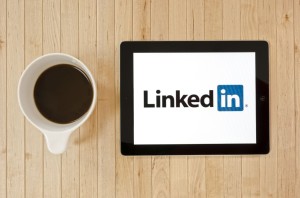#JobSearch : Your Networking Conversation Script In 5 Steps. Follow These 5 Steps and you’ll Be a Networking Call Pro in No Time.
Most of my clients cringe at the word “networking.” Networking can feel like an impersonal exchange of pleasantries at best, and an uncomfortable ask for a favor at worst.
But, remember:
1) Most people love talking about themselves. Never feel guilty asking for a conversation. Your job will be to ask a lot of thoughtful questions and listen. The receiver will most likely be pleased to oblige.
2) In general, people enjoy providing value to others. People like helping others. You’re not going to force someone to jump on a Zoom call with you unless they want to.
Even knowing these two powerful facts, having a step-by-step process for the actual networking conversation itself can be helpful.
Here’s your go-to 5-step script for your next networking conversation:
1. If you asked for the conversation, take control up front.
Uncertainty at the beginning of a call can be awkward. After an initial exchange of pleasantries simply say: “Thank you so much for jumping on the phone to talk with me today. Perhaps first it would be helpful to give you a brief background on myself and the context for this call. Then, I’d love to hear a little bit more about your background and how you ended up at [X company] and then, time permitting, it would be great to ask you some questions at the end. How does that sound?”
Like this Article? Share It! You now can easily enjoy/follow/share Today our Award-Winning Articles/Blogs with Now Over 2.5 Million Growing Participates Worldwide in our various Social Media formats below:
LinkedIn: https://www.linkedin.com/in/chris-g-laughter-b46389198/
Twitter: Follow us @ firstsunllc
Best Daily Choice: Follow the Best of FSC Career Articles/Blogs @
https://twitter.com/search?q=bestoffscblog&src=typeahead_click
Question: Want the ‘the best/current articles/blogs on the web’ on Job Search, Resume, Advancing/Changing your Career, or simply Managing People?
Answer: Simply go to our FSC Career Blog below & Type(#Jobsearch, #Resume, or #Networking) in Blog Search: https://www.firstsun.com/fsc-career-blog/
What Skill Sets Do You have to be ‘Sharpened’ ?
Article continued …
2. Have your spiel down pat, and no more than 45 seconds.
Write down and prepare your 30-45 second narrative (or as I like to call it, your “spiel.”) Do not leave this part of the conversation up to chance, because you may talk for longer than is appropriate. Your spiel should briefly explain your professional past, (where you’ve been) current state (where you are), and future goals (where you want to go).
3. Ask specific and thoughtful questions you can’t get from the website.
Don’t ask basic questions that you simply could have googled. Make your questions personal. Going Places, a female-founded company that helps individuals navigate the job search says to use the following question structure, time permitting:
- Two questions about the person. (How was your experience in sales different from [Company X] to [Company Y]? I saw you published a book 5 years ago. That’s awesome. How is that doing? What was the process like getting it published?)
- One question about the company. (What’s the company culture like on your team?)
- One question about the industry. (I saw that you’re blocking political ads on the platform. Was that something everyone feels positively about internally?)
4. Make an ask… tactfully.
At the end of the call, a person may ask what they can do for you. Even if the person doesn’t ask that question, though, don’t let that deter you. According to Going Places, “Ask your ask! And make sure it does not require extra work for [the person you’re asking]. Whether it’s a referral or advice, you need to understand the follow-up steps required and plan ahead of time. (Example: if you want an e-introduction to another person within the company, draft the email for them! Then, the most the person should have to do is forward that email.)” I tell my clients: Make your ask SEA: Simple and Easily Accomplished.
5. You should walk away with 3 nouns: people, places, or things.
Your goal should be to leave the conversation with three takeaways. Keep in mind, these can be resources like books or articles to read, other individuals to speak to, other companies to look into, or a new phrase, idea or technology you hadn’t heard of. I’m a believer in the “tree-branch effect” of networking: if each conversation leads you to three nouns, and then each of those nouns leads you to three more nouns, you’ll amplify your effect.
Follow these 5 steps and you’ll be a networking call pro in no time. And, don’t forget your thank you note!
Forbes.com | October 1, 2020 | Julia Wuench








